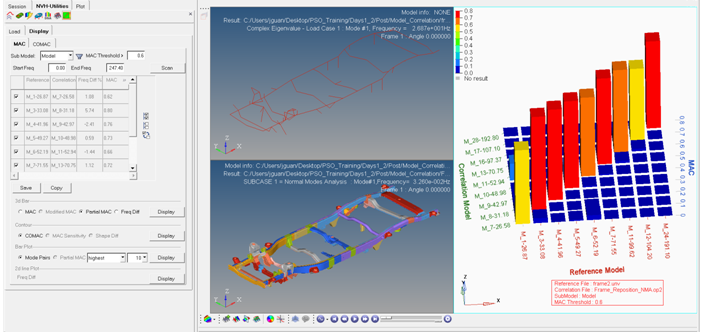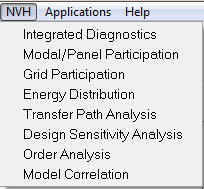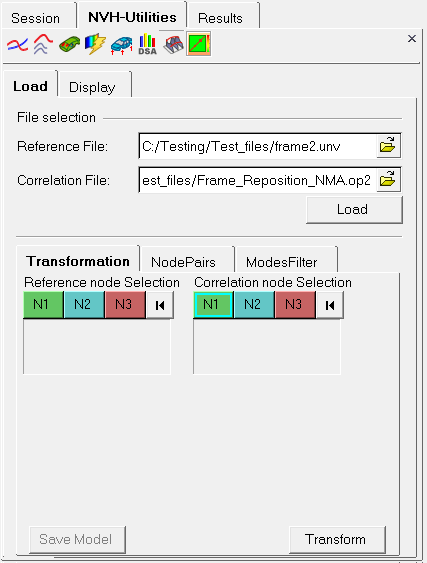Model Correlation Utility |

|

|

|

|
|
Model Correlation Utility |

|

|

|

|
The Model Correlation Utility determines the degree of similarity or correlation between two sets of results.

Modal Assurance Criterion (MAC) is a measure of the correlation between two vibration shapes. Supported vibration shapes include:
The vibration shape results, along with the finite element mesh of the structure, are assumed to come in one of the following result files:
Typically, the model that has less nodes, such as a test model, is used as the reference model. |
To access the Model Correlation utility, you must register the NVH preferences file and load the NVH Utilities. See the NVH Menu topic for more information.
| 1. | From the NVH menu, select Model Correlation. |

NVH menu
An NVH-Utilities tab is added to the browser. This browser tab contains the Load tab. It also contains icons for other utilities, such as modal participation, ![]() , and order cut analysis,
, and order cut analysis, ![]() . Select an icon to toggle between the utilities.
. Select an icon to toggle between the utilities.

NVH-Utilities Browser - Load tab (Model Correlation)
| 2. | To close the NVH-Utilities tab, click the X in the upper-right corner of the dialog. |
See Also